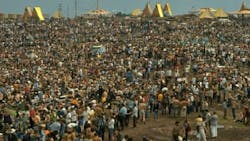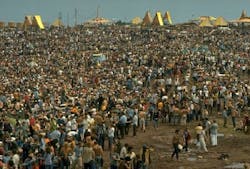Do the People Living Today Outnumber All Those Who Have Died? (Hint: NO)
Back in the 1970s at the birth of the U.S. environmental movement, “experts” made many dire pronouncements and predictions that have since been proven wrong. For example, in Newsweek, science reporters noted that because of increased dust, cloud cover, and water vapor “...the planet will cool, water vapor will fall and freeze, and a new Ice Age will be born.” Dr. S. Dillon Ripley said in Look magazine that, “Somewhere between 75% and 85% of all species of animals will be extinct by 1995.” And Paul Erlich predicted, “The battle to feed all of humanity is over. In the 1970s, the world will undergo famines--hundreds of millions of people will starve to death in spite of any crash programs embarked upon now.”
Time and facts disproved all of these assertions. But one persistent factoid from the 1970s about the population explosion states that there are more people alive today than have already lived and died. The world first hit 1 billion in population around 1800, 2 billion in 1923, then added a billion in 1960, 1975, 1985, 1999, and then again in 2012 as life expectancies grew. So this one seemed plausible. Sort of. But in a recent study, demographer Carl Haub of the Population Reference Bureau, looks at the issue and estimates the total number of people who have ever been born.
He starts with a population of two people in the year 50,000 B.C, an estimate of when Homo sapiens first appeared. Some anthropologists suggest we appeared some 200,000 years earlier, but Daub decided to play it conservatively.
He starts with a few benchmark figures. For example, most demographers accept that in 9,000 B.C., the beginning of the agricultural revolution in the Middle East, the earth held about 5 million people. By the height of the Roman empire, about 1 A.D., the planet's population hit about 300 million, Plagues came and went, wiping out large numbers of folks. In the 14th century, for example, 75 million succumbed to the Black Death. But by 1650, there were already half a billion people living on the planet.
Another demographic change has been the slowing reproductive rate. From 50,000 B.C. to 1 A.D., for example, the population averaged 80 births per 1,000 people per year. And in many places, the average life expectancy was 10 to 12 years. By the year 1200, the reproductive rate fell to 60 per 1,000 per year. It went to 50 by 1750, 40 by 1850, 35 by 1950, and is currently believed to be about 23.
Armed with the historical growth rates and population benchmarks, Haub estimates that slightly over 106 billion people have been born and lived on Earth. That means the 6.5 billion people alive today represent only 6% of all the people ever born.
So the myth is debunked. In fact, the world’s population growth is slowing and unlikely to ever double its current size to 13 billion, according to the United Nations and most demographers. Estimates place the world’s population in 2050 somewhere between 7.3 and 10.7 billion people. The U.N. also predicts the world population will stabilize at 10 billion sometime after 2200. At this rate, the living will never outnumber the dead.
About the Author
Stephen Mraz Blog
Senior Editor
Steve serves as Senior Editor of Machine Design. He has 23 years of service and has a B.S. Biomedical Engineering from CWRU. Steve was a E-2C Hawkeye Naval Flight Officer in the U.S. Navy. He is currently responsible for areas such as aerospace, defense, and medical.

